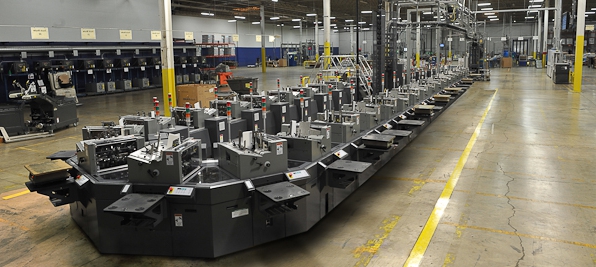After the cancellation of clear forms of primary documents, accountants were faced with the problem: what specific document should be used to accept raw materials and write them off to expenses? The complexity of the process lies in the fact that the organization uses materials with different durability and value. Therefore, the order of their accounting cannot be identical. From this article you will learn how to write off materials correctly in production, construction and at a state-owned enterprise.

Capitalization of stocks
The receipt of raw materials to the warehouse must be confirmed by accounting documents. There are several design options.
- Income order. It is made out only if there are no complaints about the quality and assortment of the batch. It is quite large, so you can skip the following details: OKPO and OKUD forms; passport number; insurance company details; unit code.
- TORG-12. This invoice must bear the signature of the person in charge. In addition to it, a receipt order is drawn up.
- Act on acceptance of materials. It is drawn up if the assortment does not match on the invoice, and also unless otherwise specified in the contract with the supplier.
Most often, an invoice with the following details is used for this purpose:
- name of the supplier and buyer;
- legal address of the organization;
- name of the delivered goods;
- their quantity;
- unit price and amount.

Delivery of raw materials from the warehouse
This operation should also be reflected in the relevant documents:
- demand-invoice when shipping materials from the warehouse, without restrictions on their receipt;
- consignment note for the supply of raw materials to the side when transferring reserves to another territorial unit (branch with a warehouse);
- A limit card is used if the organization has restrictions.
Cost accounting
After the release of materials from the warehouse into production, their value should be written off to the debit of cost accounting accounts. But it often happens that stocks physically “moved” from a warehouse to a production site, but have not yet been used. Economists, not an accountant, should monitor such situations. In such cases, as well as if the purpose of the use of materials was not indicated in the demand-waybill, an act of expense should be drawn up.
The cost of raw materials remains unchanged. Write-off of materials in 1C in such cases is reflected in the document "Movement". There is one more prerequisite for its compilation. In tax accounting, the cost of raw materials that have not been used up in production cannot be reflected in the total expenses of the current month. This process can be controlled by the “Movement” document.

IBE Accounting
Stationery and other similar materials are put on a balance sheet on the basis of expense report Responsible person or supplier’s receipt. But you cannot write them off with these documents. For this purpose, the same limit-fence card or bill of lading is used. If they did not indicate the purpose, then an act is drawn up. In this case, it is better to show the use of pens, paper and other MBP in parts. Or write off large amounts once a quarter or six months. Otherwise, regulatory authorities may come up with an unscheduled inspection.

Write-off of building materials
When erecting even small objects, correct accounting is important. The price depends on the cost of written-off raw materials.At the same time, it is important to correctly take into account allotted to production, transferred for any needs, sold and liquidated stocks. Writing off materials in construction has its own nuances. Accounting for goods and materials begins at the stage of preparation of design estimates.
State standards for writing off materials are prescribed in the SNiP document. Control over their implementation is carried out by the production and technical department (VET). The head of the separate order appoints responsible for this operation. Usually this is the head of the production site, engineer and accountant. The order also spells out the responsibility of each authorized person.
Raw Material Valuation
Inventories should be put on receipt and written off at actual cost, which includes: unit price of the material, transportation costs, consulting and other costs, customs duty, and the cost of intermediary services.
The cost of the most expensive raw materials is calculated for each item separately. But this option is used quite rarely. Most often, inventories in the amount of expenses are recorded at average cost or FIFO method. Its essence lies in the fact that the previously capitalized raw materials are written off first.
Depending on the agreement with the supplier and the availability of estimated indicators, different documents are used to confirm the cancellation of materials:
- norms of expenses for a specific production approved by management;
- estimated data;
- logs of work performed (form KS-6a);
- data on the actual consumption of raw materials (No. M-29).
The latter form must be regularly updated for a specific construction area. It should include two sections: the regulatory need for raw materials depending on the amount of work and the actual deviations.
The optimal procedure for writing off raw materials:
- the issuance of materially to the head of production on the basis of a material report with inventory balances in his warehouse - the beginning of each month;
- drawing up the M-29 form by the responsible person - at the end of the reporting period;
- transfer of data for verification to the VET, the chief engineer and then to the accounting department.
This is how materials are written off in construction.
Exceeding the standards for the use of goods and materials
If the TPO has discovered a discrepancy between some norms of the expenditure of reserves, then the production manager must write an explanatory note in the established form. Also, a special commission should draw up an act on the use of raw materials. All these documents are attached to the M-29 report. If the overspending was caused by theft or spoilage, you must contact the appropriate authorities for information. If the manager finds the data justified, then the raw materials can be written off.
Since the use of materials is indicated in advance in the estimate documentation, which cannot be changed during construction, all costs are borne by the developer. In this case, the leader must take all measures to find the perpetrators in order to recover losses from them. In case of fire, theft or other emergency situations, the accounting department considers the expenses to be non-operating expenses.

Writing off materials in a budget institution
The movement of stocks within the organization is made out of the following documents:
- Statement on the issuance of feed.
- Requirement invoice.
- Menu-requirement for the issuance of products.
- Statement of vacation material assets.
In addition to the above documents, materials can also be written off on the basis of:
- Waybill (for all types of fuels and lubricants).
- Write-off Act.
- The act of writing off household equipment.
The following details must be indicated in these documents:
- name, date of compilation;
- name of institution and its codes (TIN, OKPO, KPP);
- name of the business transaction;
- meters;
- officials, their signatures.
Conventionally, inventories can be divided into the following groups: those whose accounting must be continued after being put into operation, and raw materials, which need not be controlled. The expense of the second category is made out by the Bulletin of the release of material assets for the needs of the organization. With the same document, stationery is dispensed to employees of the enterprise and written off at the time of commissioning.
The use of the remaining stocks is fixed by the Requirement-invoice, indicating the names, quantities, responsible persons and purpose. Documents confirming the use of materials are approved by the head of the organization. The act of writing off soft and household equipment is executed on the basis of a decision of the commission. Responsible persons record the use of stocks in the Book or Card. This is how the materials are written off in a budget institution.
Postings
In parallel with the issuance of stocks from the warehouse, they are debited from the accounting accounts and credited to the relevant cost items. This operation is drawn up with a limit-fence card, a demand-invoice. But since their form is not clearly spelled out in management accounting, each enterprise is finalizing documents for itself. Thus, the cancellation of materials in production, like in any other field, is made according to a unified document. No matter what paper the operation is carried out, the main thing is that all the details are indicated in it. Below are the relevant postings.
Write-off of materials (table):
| D | Set | Operation |
| 20 | 10 | Supply of raw materials to the workshop |
| 23 | 10 | Transfer of materials to auxiliary production |
| 25 | 10 | Distribution of raw materials for general production needs |
| 26 | 10 | Transfer of materials for general business needs |
| 10 | 10 | The movement of raw materials between workshops |
An inventory should be carried out at least once a year at the enterprise. At the same time, a commission is formed consisting of an accountant, a production manager and an employee of the workshop, which is involved in the assessment and calculation of all stock balances. If as a result of such a check, obsolete stocks, raw materials that have fallen into disrepair, as well as shortages as a result of theft, fire, spoilage and other disasters have been identified, a corresponding act is drawn up. The order to write off the materials must be signed by the head of the organization. This accounting operation is already carried out on other transactions.
| D | Set | Write-off of materials |
| 94 | 10 | based on the act |
| 20 (23) | 94 | within the norms of loss due to the main (auxiliary) production |
| 25 | 94 | for general production needs |
| 26 | 94 | due to general business expenses |
| 73.2 | 94 | perpetrators above the norm |
| 91.2 | 68.2 | recovery of VAT presented for payment of shortfalls |
| 50.01 | 73.2 | debt repayment |
| 91.2 | 94 | in excess if no perpetrators were found, or by court order |
| 99 | 10 | natural disaster losses |
| 99 | 68.2 | recovery of VAT presented for payment of shortfalls |
| 91.2 | 10 | disposal of materials as a result of gratuitous transfer |
| 91.2 | 68.2 | VAT adjustment |
If the raw materials were sold to another natural or legal person at a predetermined price, then such a transaction is executed by the document “Outbound Materials”. An agreement, invoice and TTN are attached to it, confirming the shipment of the goods.
| D | Set | Operation |
| 91.2 | 10 | Disposal of materials |
| 62.01 | 90.1 | Revenue with VAT |
| 91.2 | 68.2 | Value added tax |
| 51 | 62.01 | Buyer repayment |
Entering data into the database
To date, a specialized program 1C 8.2 is used for accounting. All information on inventories is entered into it, the receipt and write-off of materials is made out. A sample of documents (standard form) is already driven into the database. The user only needs to fill in the appropriate fields. At the same time, it is very important to correctly indicate the names of the position and the accounting account.
To capitalize materials in the standard program "1C: Accounting 8", you must perform one of the following operations:
- “Nomenclature and warehouse” - “Directories” - “Nomenclature” - “Materials”;
- “Enterprise” - “Goods” - “Nomenclature” - “Materials”.
Next, you need to select “Goods and services receipt” in the “Purchases and sales” submenu. This document generates a posting to Debit 10 of the account. Write-off of materials in 1C 8.2 is made out by the standard document “Requirement-waybill”, which is located in the “Product release” section of the “Production” menu.
In the window that appears, you first need to select a warehouse. If the stocks to be held by one document are capitalized differently, then in the header you should check the box opposite the item “Cost accounts” on the tab “Materials”. This checkbox adds the appropriate column to the document form.
To quickly fill in the inventory items in a document, you can use the "Select" button. At the same time, a materials directory will appear on the screen, in which you need to select positions, specify accounting accounts and quantity. The document is held after pressing the "OK" button. In this case, inventories will be written off at the average cost from the article “Raw materials” in the Debit of accounts (20.01, 26, 25, 44.01). In printed form, an invoice in the form of M11 is displayed. It is signed by responsible persons, and then a stamp is put.

This is a standard document that is formed if the raw materials were used for specific purposes. In all other cases, the cancellation of materials is executed by the same document, which is located in the "Warehouse" menu. The principle of filling it is similar to the one described above: in the window that appears, you must first select a warehouse, then drive in the inventory items, their number and specify the accounting accounts.
If the program gives an error during the document, three options are possible: either not all fields were filled in the form itself, or the wrong account was indicated, or the selected raw materials were not in stock. First you need to check the document itself. The wrong account could appear if the form was created by copying the previous one. If the error is caused by a shortage of materials in the warehouses, then it makes sense to check the sequence of documents (income-expense) and change the date or time of writing off. Here's how to write off materials in production.
Conclusion
So, we examined all the nuances of this issue. Accounting for write-off of materials allows you to qualitatively control the availability of stocks and simplifies the work of accounting. This helps to avoid problems with regulatory authorities regarding the use of raw materials. State standards for writing off materials are prescribed in SNiP. Monitoring their implementation is carried out by OTP. Since the documents confirming the consumption of raw materials are not clearly spelled out at the highest level, each enterprise finalizes universal forms independently. An order to write off materials must be signed by the head of the organization.








